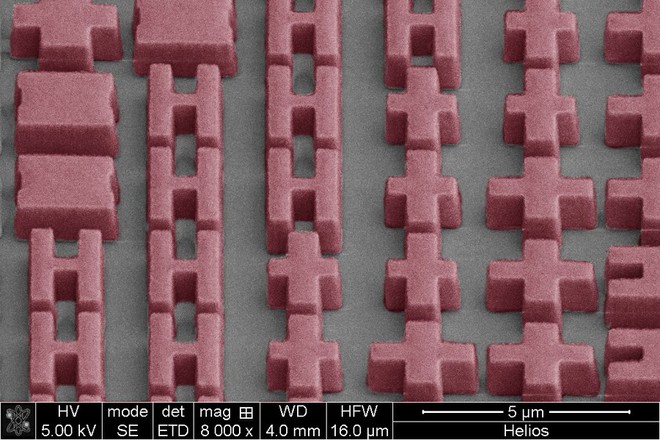Successfully made a camera lens that can change focus without the need for moving parts
- Tram Ho
Modern zoom lenses can work flawlessly and smoothly. But if you open one up you’ll be overwhelmed by their terrifying degree of micro-mechanical complexity, with 20 or more polished glass elements set to move in different directions at high speed. degrees when you perform zooming or focusing. The fact that these systems have been around for many years and can still be used well in spite of impact, exposure to rain, dust, and changing temperatures, is a testament to the success of these technologies. develop them.

The lens created by MIT scientists can change refraction based on temperature.
But a new development from the Materials Research team at Massachusetts Institute of Technology (MIT) claims it is possible to focus light quickly and accurately using a transparent phase-transition material without having to move around. whatever. Instead, what they call this “adjustable super thin lens” rearranges its very atomic structure in response to heat.
The material in question is a new landmark based on germanium / antimony / tellurium, a material commonly used in reusable CDs and DVDs. During that recording, laser heat is used to transfer material between transparent and non-transparent states. But the MIT team added selenium to the mixture and found that when heat was added, its atomic structure “shifted from a random, amorphous tangle of atoms to a crystalline structure. more order “, which changes the refractive power without changing its transparency.

Magnified image of the material showing its microscopic ordering features.
A super lens will have a small structure, with precise patterns engraved on its surface, that can be designed to refract or reflect light in certain ways. When a material is heated, its optical properties change. In the team’s test, it focused infrared light at a close point at room temperature, and then moved its focus point further away as heat was applied.
The team tested the lens by placing it on stage and illuminating it with a laser beam tuned to the infrared band. They placed two transparent resolution charts in front of it at different distances and found that it was able to resolve sharp images of images closer at room temperature, and similarly sharp images of The image stays further away when heated, even after the heat source has been removed.
“The results show that an adjustable ultra-thin lens, without moving parts, can obtain images without aberrations of objects that are overlapping at different depths, comparable to those of Traditional bulky optical systems, “said Tian Gu, a scientist at the MIT Materials Research Laboratory.
The team believes it can be fabricated with a built-in micro-thermostat that can “quickly heat the material with short pulses in a matter of milliseconds”, thereby precisely adjusting the temperature to allow it. Focus adjustment changes continuously in a variety of intermediate states between the minimum and maximum focal distance. However, it’s unclear how quickly it will be able to cool down and re-focus at the minimum distance.

Future camera lenses probably won’t need to be bulky and complicated anymore.
” In general, when an optical device is built, it is difficult to adjust its properties after fabrication,” said team member Mikhail Shalaginov. “That’s why this material is like a ‘holy grail’ for the optical engineers, allowing for an efficient and large range of focus switching.”
The team says their prototypes create could be useful in miniature thermal ranges, like ultra-compact thermal cameras and low-profile night vision goggles. Further developments could allow the creation of ultra-compact zoom lenses for smartphones with no moving parts.
The research has been published on Nature Communications.
Refer to NewAtlas
Source : Genk
